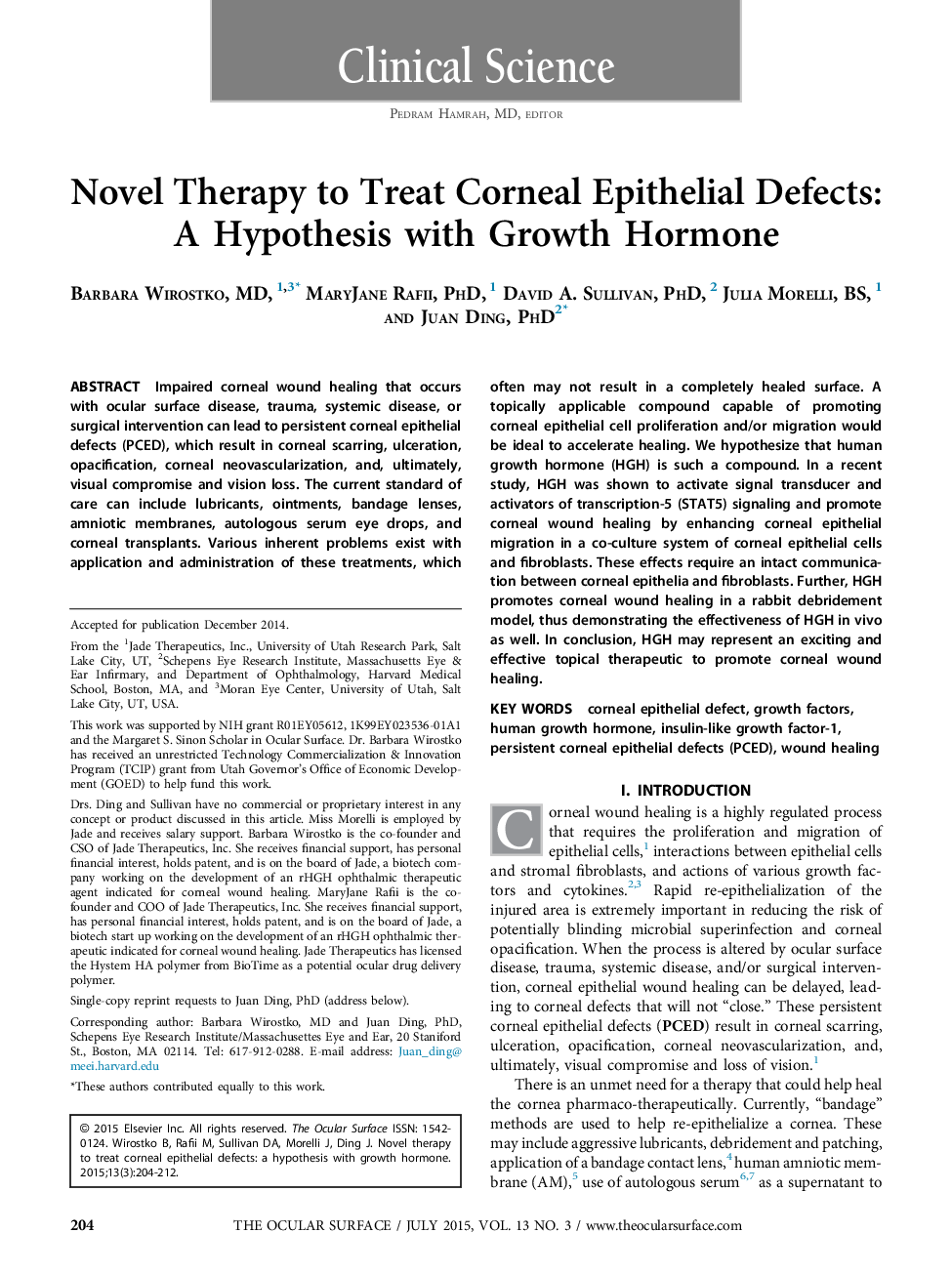| Article ID | Journal | Published Year | Pages | File Type |
|---|---|---|---|---|
| 2698948 | The Ocular Surface | 2015 | 10 Pages |
Abstract
Impaired corneal wound healing that occurs with ocular surface disease, trauma, systemic disease, or surgical intervention can lead to persistent corneal epithelial defects (PCED), which result in corneal scarring, ulceration, opacification, corneal neovascularization, and, ultimately, visual compromise and vision loss. The current standard of care can include lubricants, ointments, bandage lenses, amniotic membranes, autologous serum eye drops, and corneal transplants. Various inherent problems exist with application and administration of these treatments, which often may not result in a completely healed surface. A topically applicable compound capable of promoting corneal epithelial cell proliferation and/or migration would be ideal to accelerate healing. We hypothesize that human growth hormone (HGH) is such a compound. In a recent study, HGH was shown to activate signal transducer and activators of transcription-5 (STAT5) signaling and promote corneal wound healing by enhancing corneal epithelial migration in a co-culture system of corneal epithelial cells and fibroblasts. These effects require an intact communication between corneal epithelia and fibroblasts. Further, HGH promotes corneal wound healing in a rabbit debridement model, thus demonstrating the effectiveness of HGH in vivo as well. In conclusion, HGH may represent an exciting and effective topical therapeutic to promote corneal wound healing.
Keywords
NF-κBLSCDKGFrhGHSTAT5P13KRecombinant hGHbFGFIGFEGFhGHiGFRHyaluronic acidWound Healinginsulin-like growth factor-1epidermal growth factorAmniotic membraneGrowth factorsbasic fibroblast growth factorInsulin-like growth factornuclear factor kappa-light-chain-enhancer of activated B cellsphosphoinositide 3-kinaseGrowth hormoneHuman growth hormonelimbal stem cell deficiencyIGF-1 receptor
Related Topics
Health Sciences
Medicine and Dentistry
Ophthalmology
Authors
Barbara MD, MaryJane PhD, David A. PhD, Julia BS, Juan PhD,
